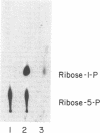Abstract
Although uridine and adenosine are converted by membrane-associated nucleoside phosphorylases to ribose-1-phosphate (ribose-1-P) and the corresponding bases (uracil and adenine), only ribose -1-P is accumulated within Salmonella typhimurium LT2 membrane vesicles. In accordance with these observations, no uptake is observed when the vesicles are incubated with the bases or nucleosides labeled in their base moieties. The vesicles lack a transport system for ribos-1-P, since excess ribose-1-P does not inhibit the uptake of the ribose moiety of uridine. In addition, there is no exchange with preaccumulatedribose-1-P. Thus, uridine, rather than ribose-1-P, must serve as the initially transported substrate. The uptake of the ribose portion of uridine is coupled to electron transport, and the levels to which ribose-1-P are accumulated may be reduced by adding various bases to the reaction mixtures. The bases appear to inhibit the uridine phosphorylase reaction and/or cause an efflux of ribose-1-P from the vesicles. This loss of ribose-1-P reflects the accumulation of nucleosides in the external medium after being synthesized within the membranes. Synthesis of the nucleosides from intravesicular ribose-1-P and exogenous base proceeds even though the bases are not accumulated by the vesicles. Furthermore, ribose-1-P cannot significantly inhibit uridine phosphorylase activity unless the membranes are disrupted. These observations indicate that the membrane-associated nucleoside phosphorylases may have a transmembranal orientation with their base and ribose-1-P binding sites on opposite sides of the membranes. Such an asymmetric arrangement of these enzymes may facilitate the uptake of the ribosyl moiety of nucleosides by a group translocation mechanism. Thus, nucleosides may be cleaved during the membrane transport process, with the resultant bases delivered to the external environment while ribose-1-P is shunted to the intravesicular space.
Full text
PDF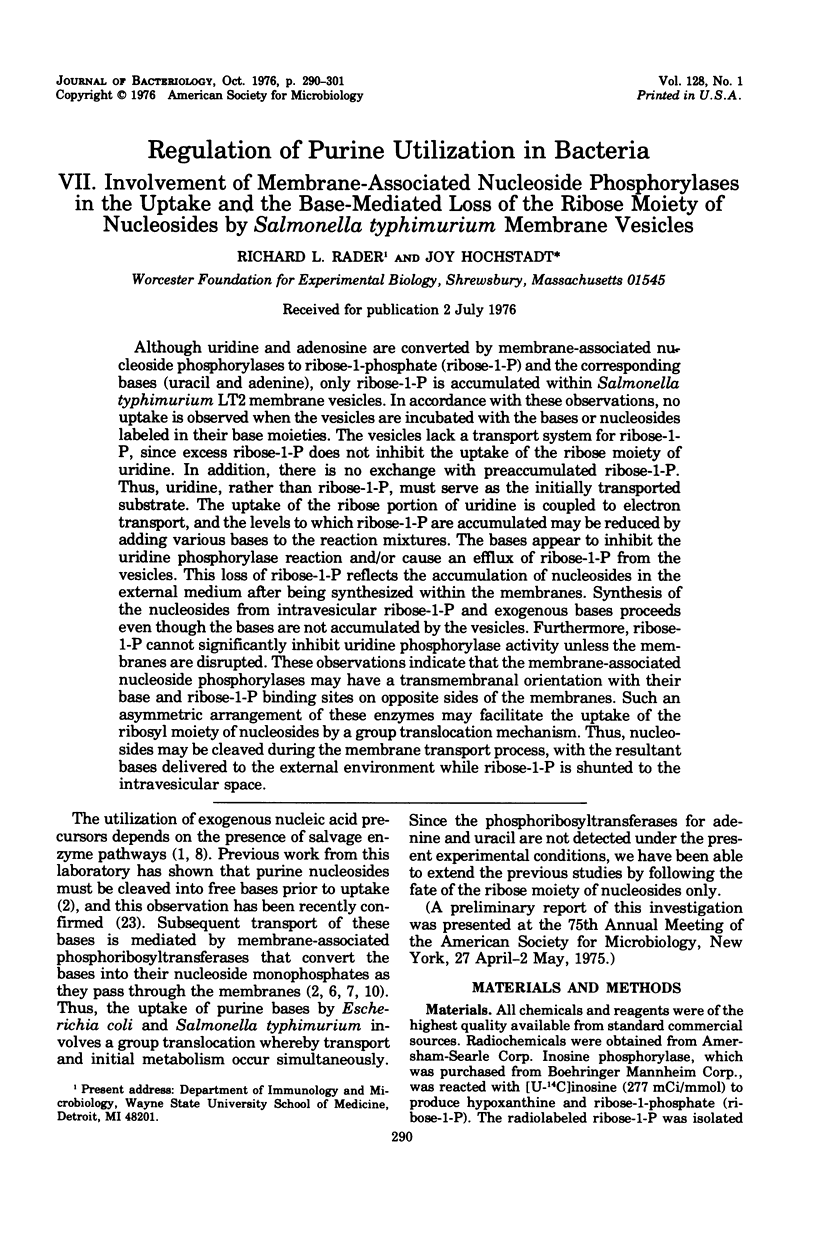
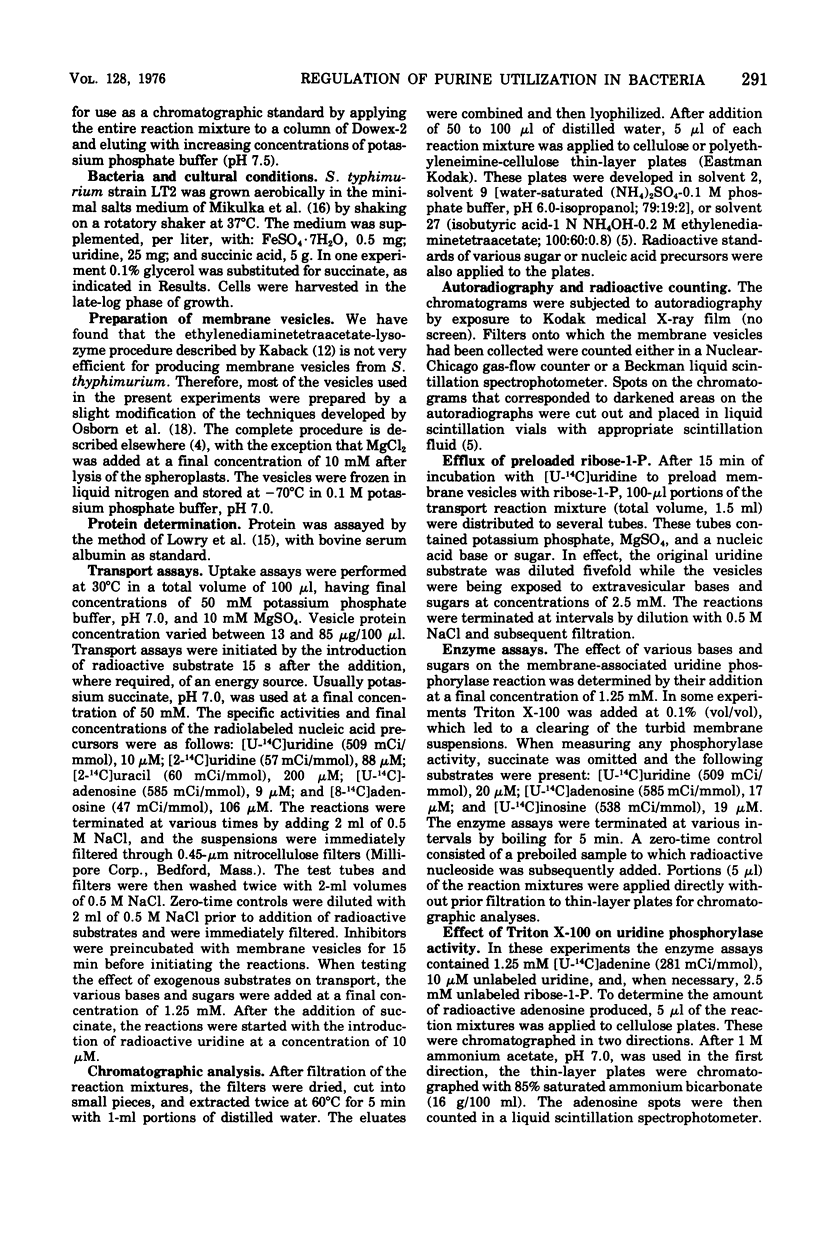
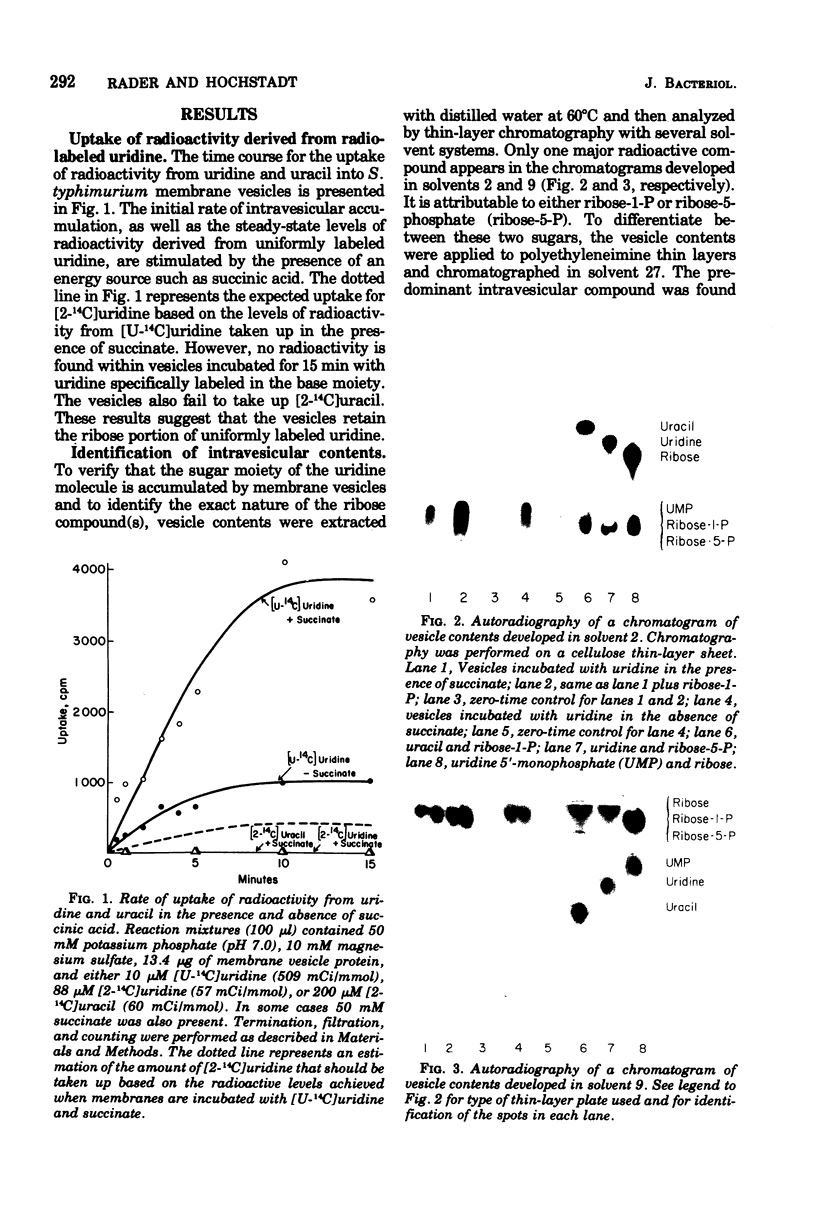
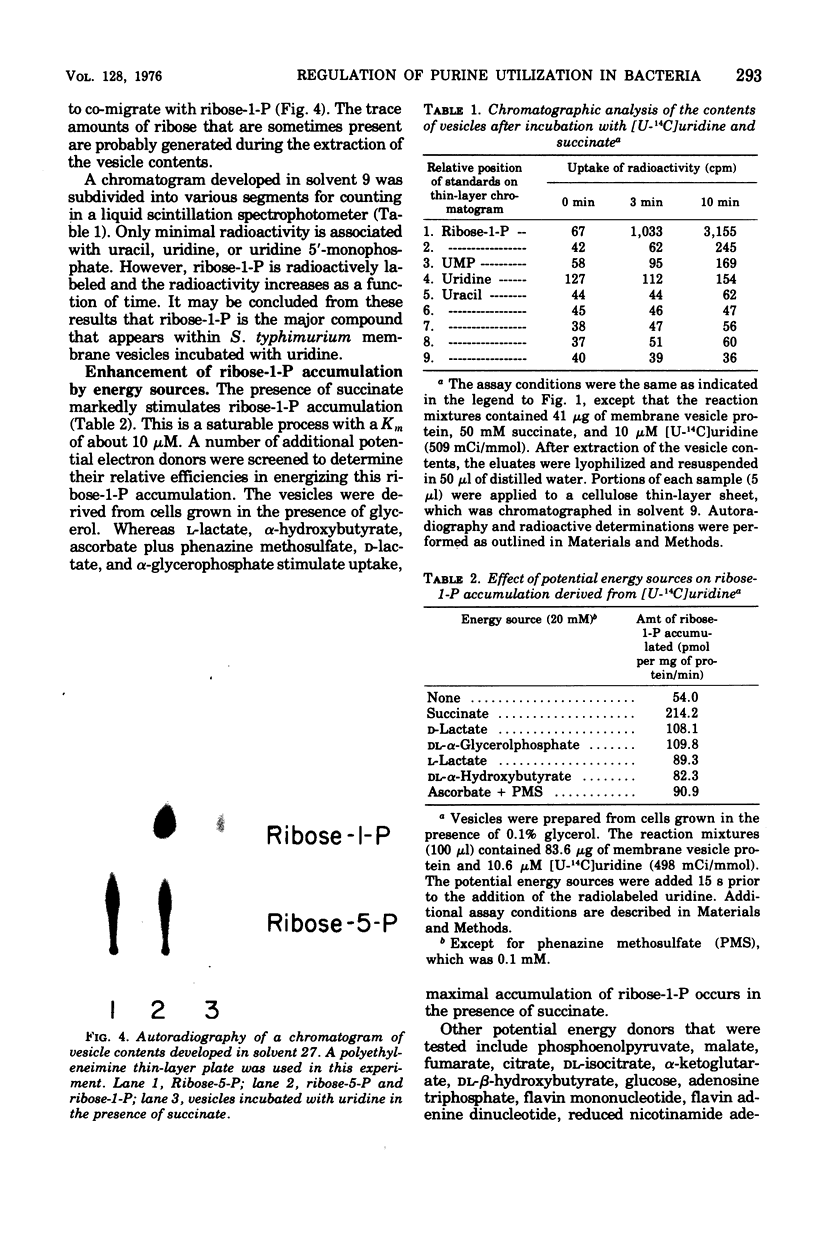
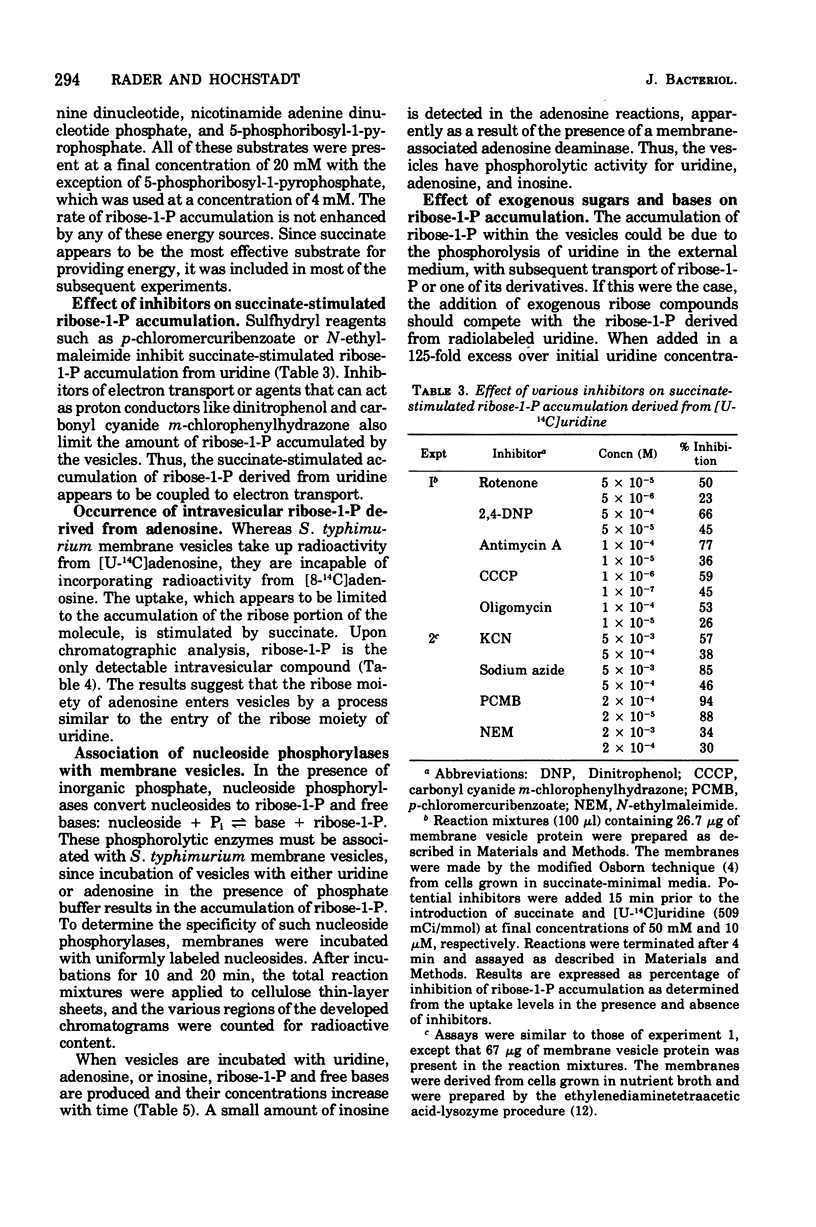
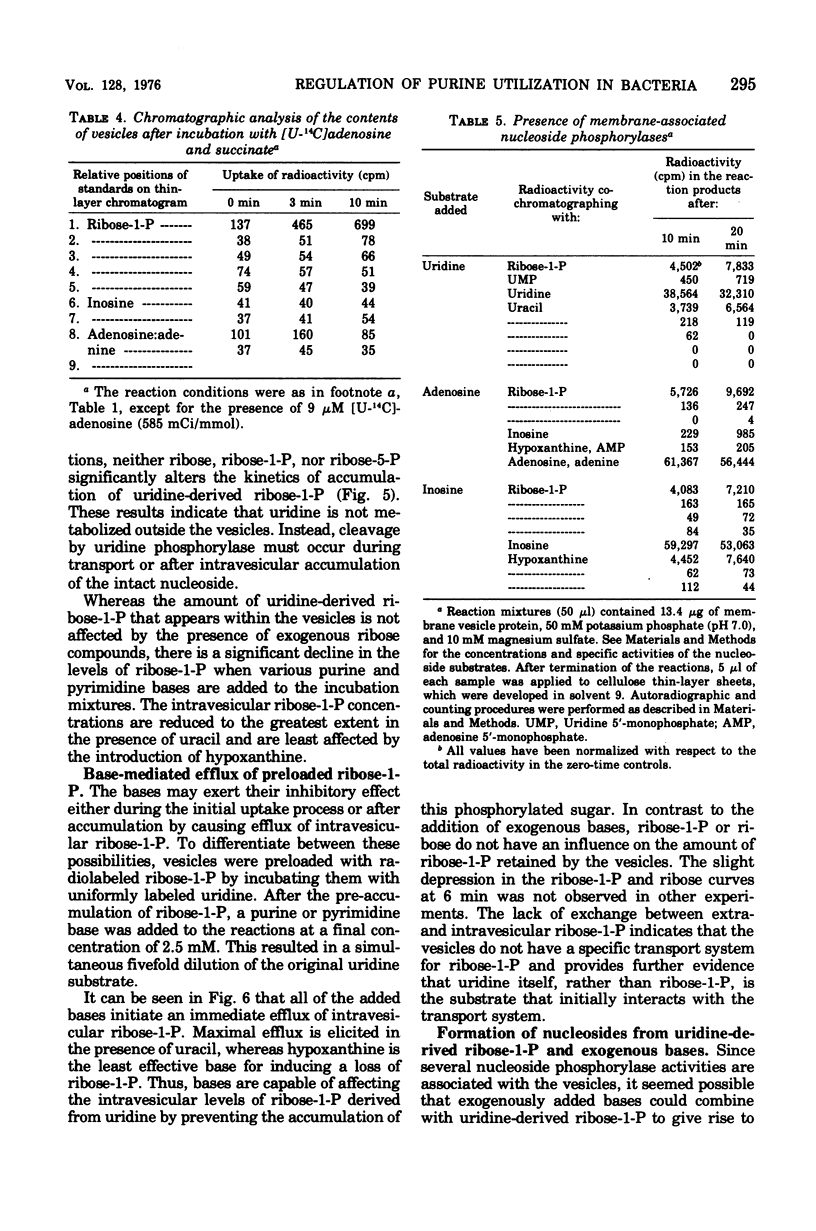
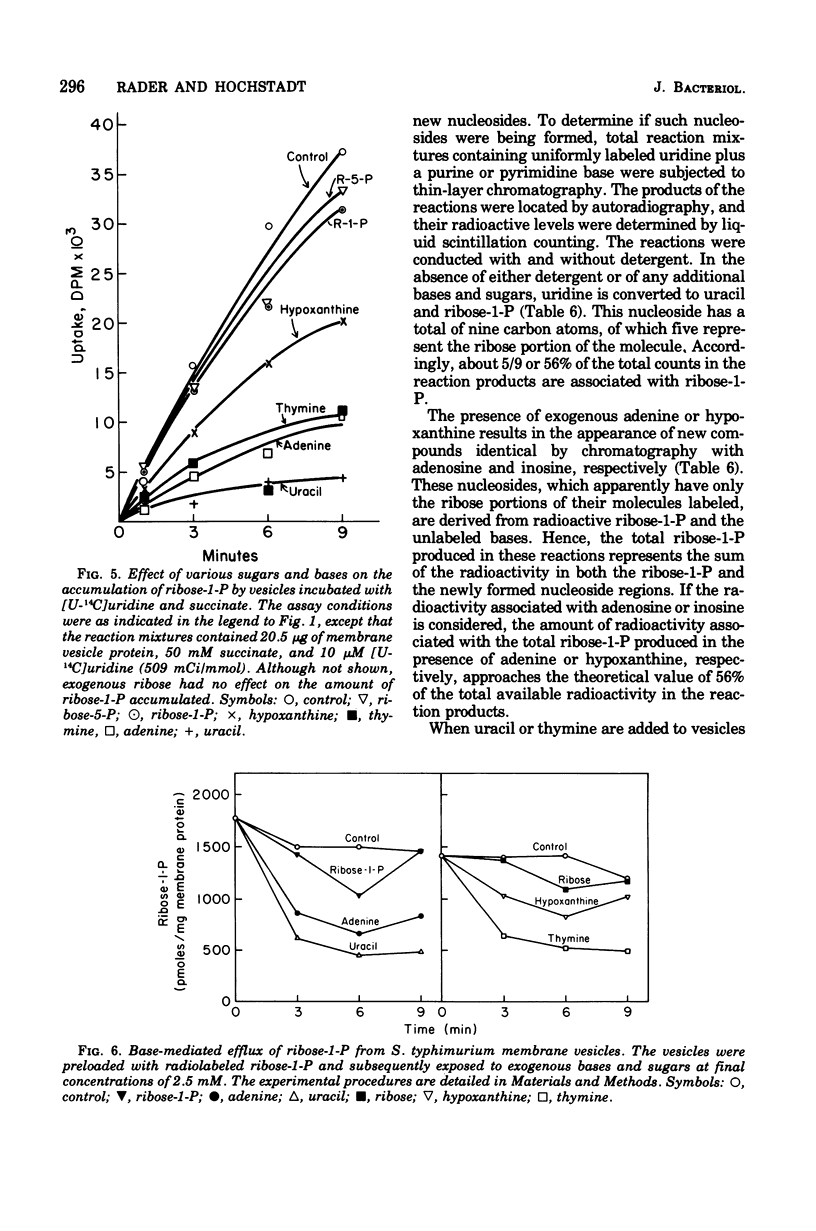
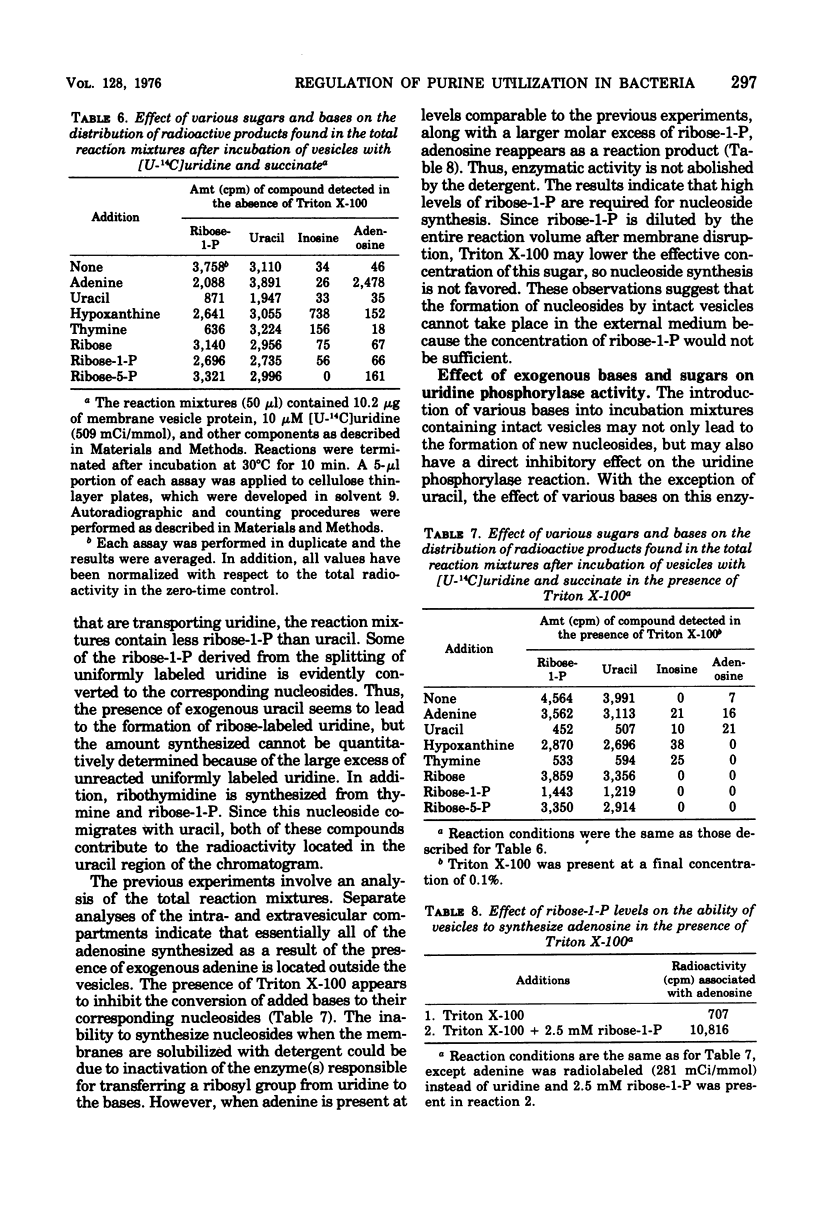
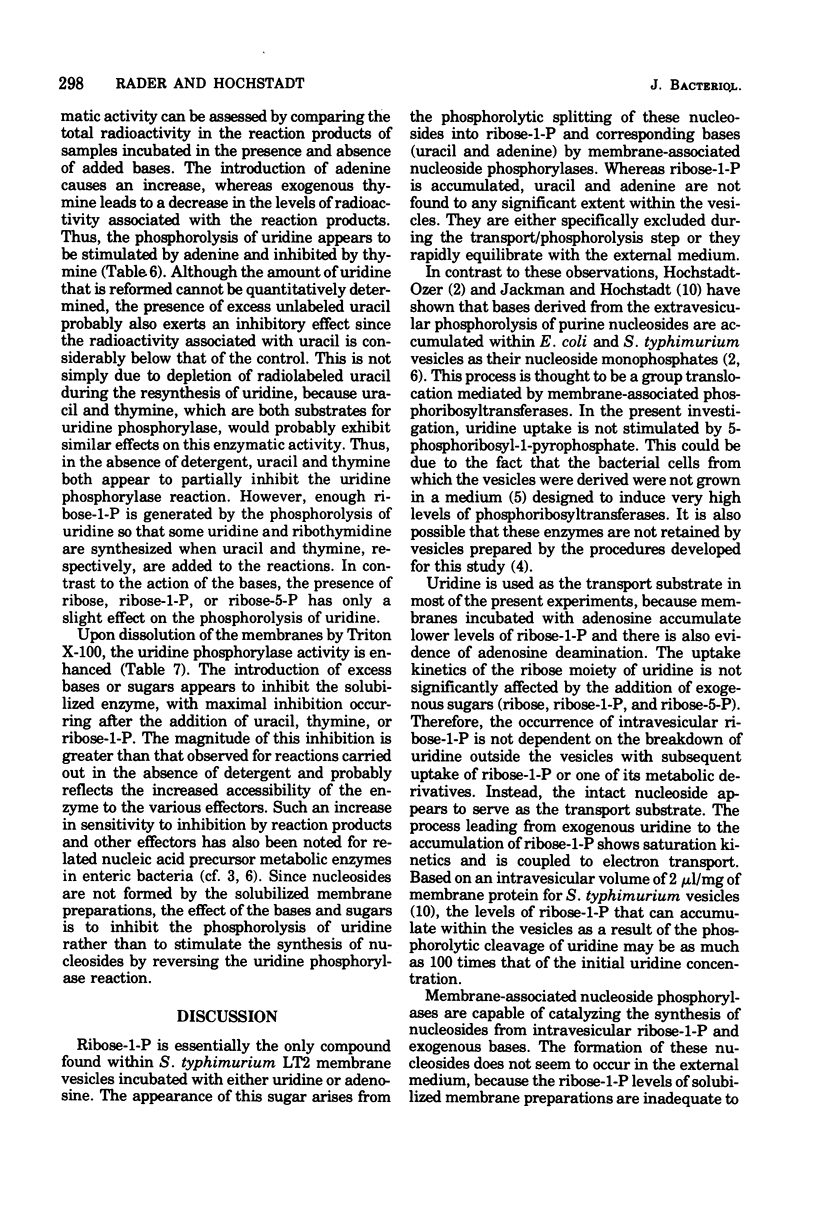
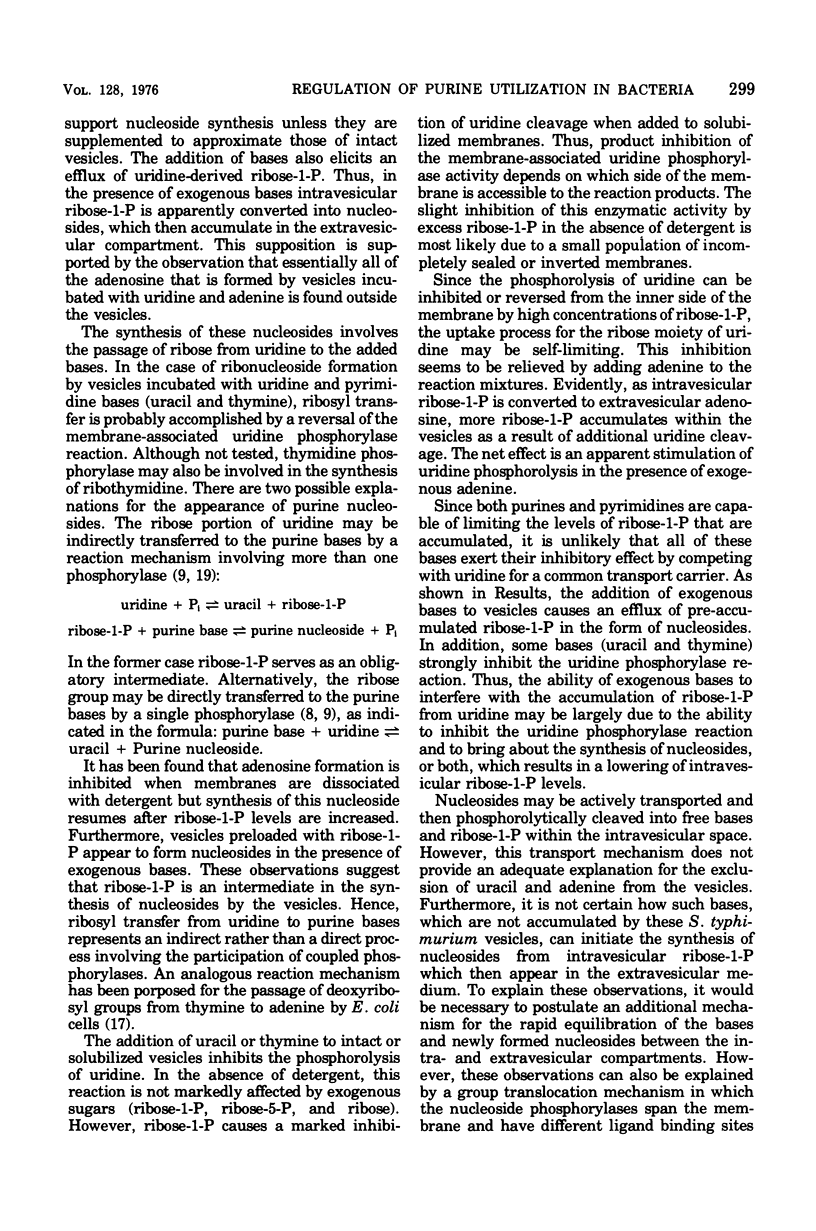
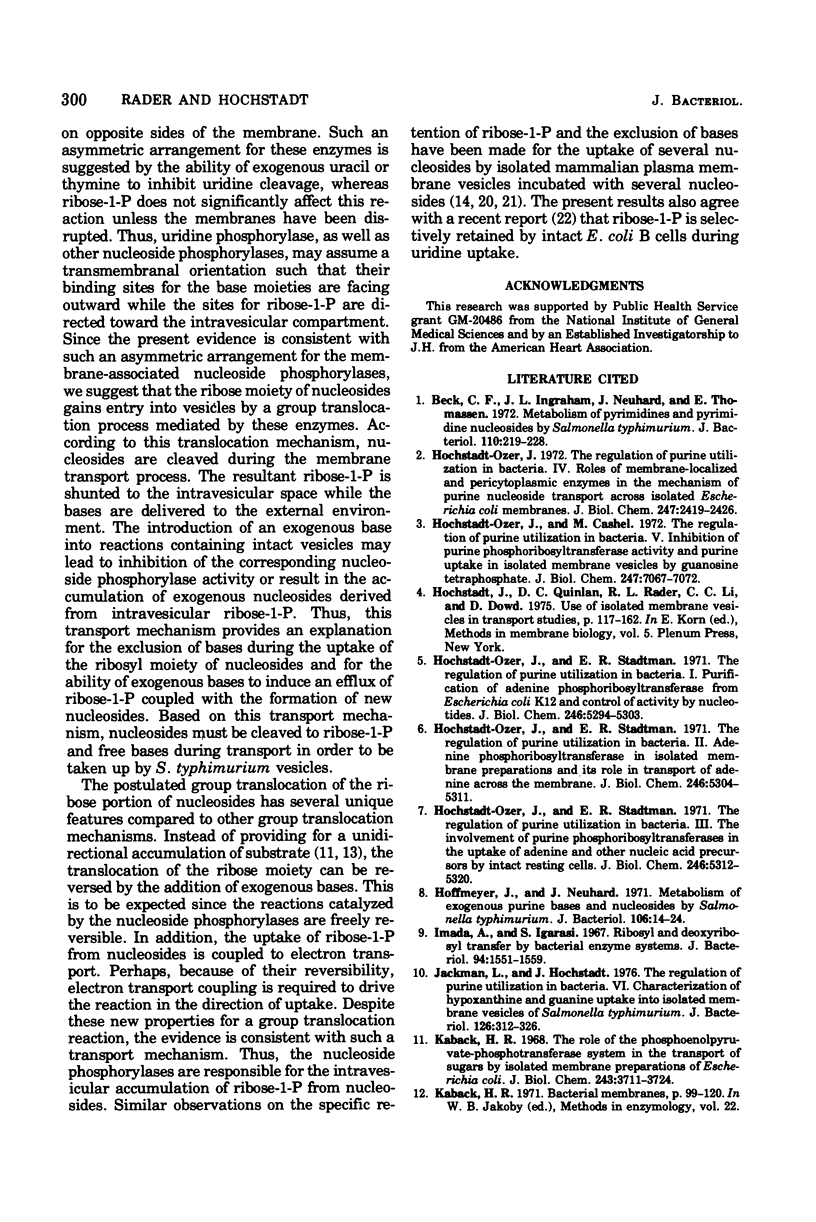
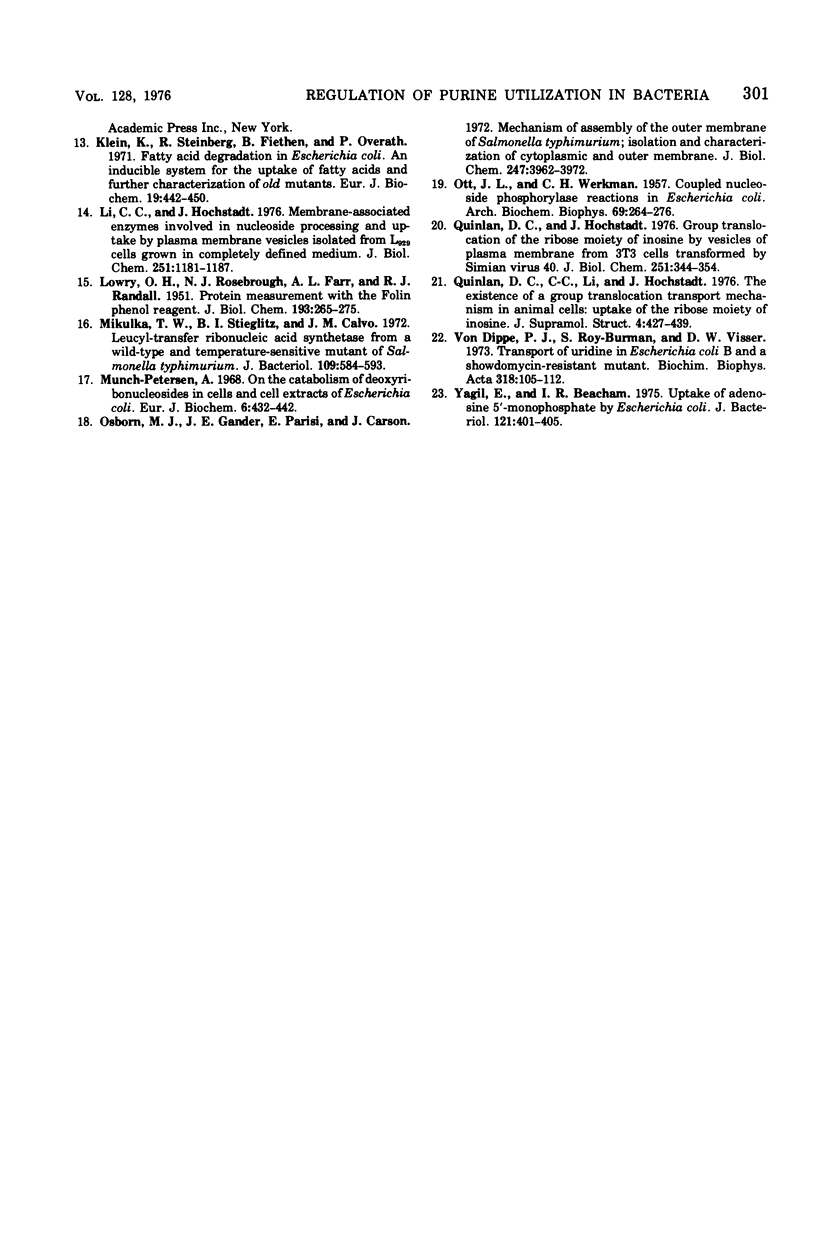
Images in this article
Selected References
These references are in PubMed. This may not be the complete list of references from this article.
- Beck C. F., Ingraham J. L., Neuhard J., Thomassen E. Metabolism of pyrimidines and pyrimidine nucleosides by Salmonella typhimurium. J Bacteriol. 1972 Apr;110(1):219–228. doi: 10.1128/jb.110.1.219-228.1972. [DOI] [PMC free article] [PubMed] [Google Scholar]
- Hochstadt-Ozer J., Cashel M. The regulation of purine utilization in bacteria. V. Inhibition of purine phosphoribosyltransferase activities and purine uptake in isolated membrane vesicles by guanosine tetraphosphate. J Biol Chem. 1972 Nov 10;247(21):7067–7072. [PubMed] [Google Scholar]
- Hochstadt-Ozer J., Stadtman E. R. The regulation of purine utilization in bacteria. I. Purification of adenine phosphoribosyltransferase from Escherichia coli K12 and control of activity by nucleotides. J Biol Chem. 1971 Sep 10;246(17):5294–5303. [PubMed] [Google Scholar]
- Hochstadt-Ozer J., Stadtman E. R. The regulation of purine utilization in bacteria. II. Adenine phosphoribosyltransferase in isolated membrane preparations and its role in transport of adenine across the membrane. J Biol Chem. 1971 Sep 10;246(17):5304–5311. [PubMed] [Google Scholar]
- Hochstadt-Ozer J., Stadtman E. R. The regulation of purine utilization in bacteria. III. The involvement of purine phosphoribosyltransferases in the uptake of adenine and other nucleic acid precursors by intact resting cells. J Biol Chem. 1971 Sep 10;246(17):5312–5320. [PubMed] [Google Scholar]
- Hochstadt-Ozer J. The regulation of purine utilization in bacteria. IV. Roles of membrane-localized and pericytoplasmic enzymes in the mechanism of purine nucleoside transport across isolated Escherichia coli membranes. J Biol Chem. 1972 Apr 25;247(8):2419–2426. [PubMed] [Google Scholar]
- Hoffmeyer J., Neuhard J. Metabolism of exogenous purine bases and nucleosides by Salmonella typhimurium. J Bacteriol. 1971 Apr;106(1):14–24. doi: 10.1128/jb.106.1.14-24.1971. [DOI] [PMC free article] [PubMed] [Google Scholar]
- Imada A., Igarasi S. Ribosyl and deoxyribosyl transfer by bacterial enzyme systems. J Bacteriol. 1967 Nov;94(5):1551–1559. doi: 10.1128/jb.94.5.1551-1559.1967. [DOI] [PMC free article] [PubMed] [Google Scholar]
- Jackman L. E., Hochstadt J. Regulation of purine utilization in bacteria. VI. Characterization of hypoxanthine and guanine uptake into isolated membrane vesicles from Salmonella typhimurium. J Bacteriol. 1976 Apr;126(1):312–326. doi: 10.1128/jb.126.1.312-326.1976. [DOI] [PMC free article] [PubMed] [Google Scholar]
- Kaback H. R. The role of the phosphoenolpyruvate-phosphotransferase system in the transport of sugars by isolated membrane preparations of Escherichia coli. J Biol Chem. 1968 Jul 10;243(13):3711–3724. [PubMed] [Google Scholar]
- Klein K., Steinberg R., Fiethen B., Overath P. Fatty acid degradation in Escherichia coli. An inducible system for the uptake of fatty acids and further characterization of old mutants. Eur J Biochem. 1971 Apr;19(3):442–450. doi: 10.1111/j.1432-1033.1971.tb01334.x. [DOI] [PubMed] [Google Scholar]
- LOWRY O. H., ROSEBROUGH N. J., FARR A. L., RANDALL R. J. Protein measurement with the Folin phenol reagent. J Biol Chem. 1951 Nov;193(1):265–275. [PubMed] [Google Scholar]
- Li C. C., Hochstadt J. Membrane-associated enzymes involved in nucleoside processing by plasma membrane vesicles isolated from L929 cells grown in defined medium. J Biol Chem. 1976 Feb 25;251(4):1181–1187. [PubMed] [Google Scholar]
- Mikulka T. W., Stieglitz B. I., Calvo J. M. Leucyl-transfer ribonucleic acid synthetase from a wild-type and temperature-sensitive mutant of Salmonella typhimurium. J Bacteriol. 1972 Feb;109(2):584–593. doi: 10.1128/jb.109.2.584-593.1972. [DOI] [PMC free article] [PubMed] [Google Scholar]
- Munch-Petersen A. On the catabolism of deoxyribonucleosides in cells and cell extracts of Escherichia coli. Eur J Biochem. 1968 Nov;6(3):432–442. doi: 10.1111/j.1432-1033.1968.tb00465.x. [DOI] [PubMed] [Google Scholar]
- OTT J. L., WERKMAN C. H. Coupled nucleoside phosphorylase reactions in Escherichia coli. Arch Biochem Biophys. 1957 Jul;69:264–276. doi: 10.1016/0003-9861(57)90491-5. [DOI] [PubMed] [Google Scholar]
- Osborn M. J., Gander J. E., Parisi E., Carson J. Mechanism of assembly of the outer membrane of Salmonella typhimurium. Isolation and characterization of cytoplasmic and outer membrane. J Biol Chem. 1972 Jun 25;247(12):3962–3972. [PubMed] [Google Scholar]
- Quinlan D. C., Hochstadt J. Group translocation of the ribose moiety of inosine by vesicles of plasma membrane from T(3 cells transformed by Simian virus 40. J Biol Chem. 1976 Jan 25;251(2):344–354. [PubMed] [Google Scholar]
- Yagil E., Beacham I. R. Uptake of adenosine 5'-monophosphate by Escherichia coli. J Bacteriol. 1975 Feb;121(2):401–405. doi: 10.1128/jb.121.2.401-405.1975. [DOI] [PMC free article] [PubMed] [Google Scholar]
- von Dippe P. J., Roy-Burman S., Visser D. W. Transport of uridine in Escherichia coli B and a showdomycin-resistant mutant. Biochim Biophys Acta. 1973 Aug 9;318(1):105–112. doi: 10.1016/0005-2736(73)90340-4. [DOI] [PubMed] [Google Scholar]





